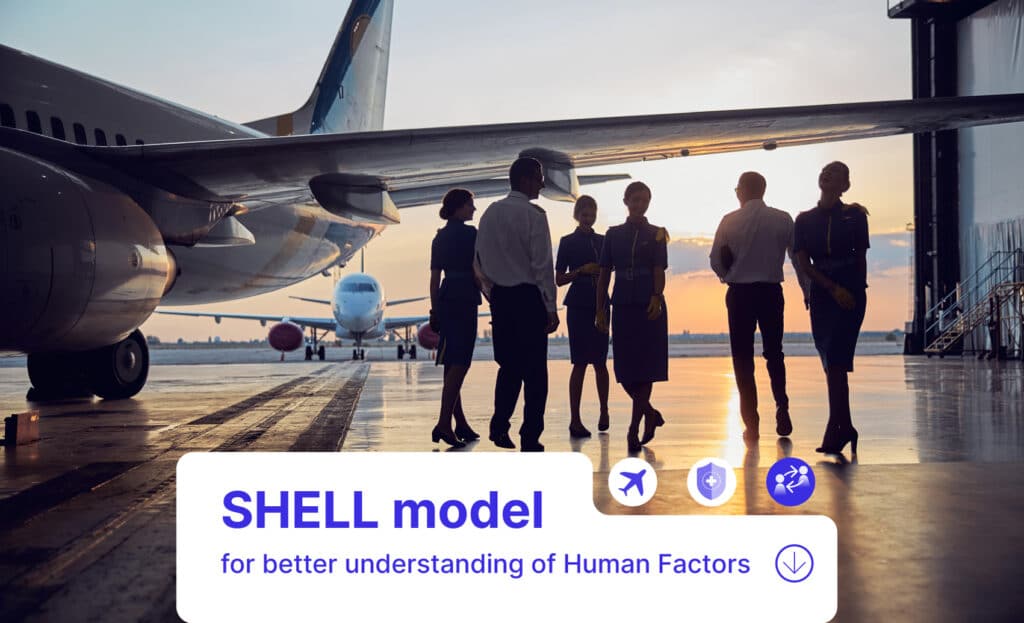
The SHELL model is a CRM tool that clarifies the scope of aviation human factors and assists in understanding the relationship between aviation systems and the human component. Initially developed by Elwyn Edwards and refined by Frank Hawkins. The model considers several contextual and task-related factors that interact with human operators within the aviation system.
Discover all our aviation-related topics.
The model consists of five “building blocks”. Each block contains the initial letter of its components: Software, Hardware, Environment, and Liveware.
Software – the rules, procedures, written documents, etc., are part of the standard operating procedures.
Hardware – Machine, the Air Traffic Control suites, their configuration, controls and surfaces, displays and functional systems.
Environment – the situation in which the L-H-S system must function, the social and economic climate, and the natural environment.
Liveware – the human beings – flight crews, ATC controllers, engineers and maintenance personnel, management and administration people – within the system.
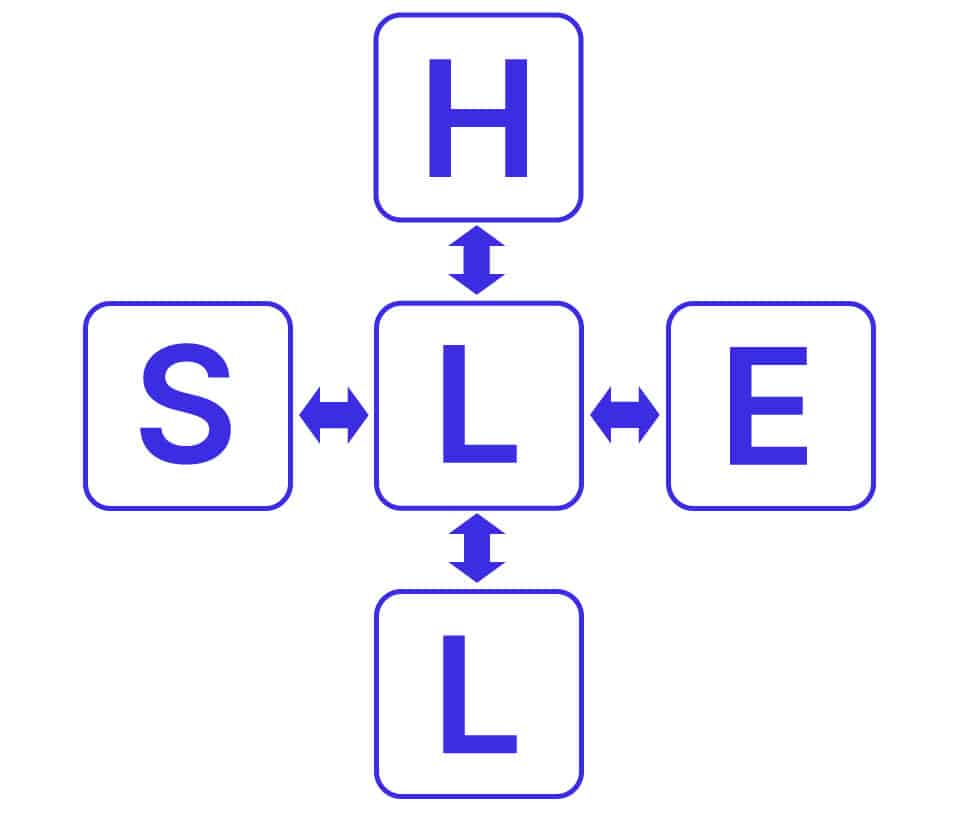
Each block represents the components and complexities of Human Factors studies within an aviation environment (ICAO). To avoid breakdowns and stress in the system, one must carefully match these blocks. It is crucial to assess and consider these interactions in all sectors of the aviation system. The SHELL model suggests that the human is rarely, if ever, the sole cause of an accident.
The model places the person or the human being at the centre as they are the system’s most critical and flexible component. The human being is also the least predictable dimension in the model and is highly susceptible to internal (hunger, fatigue, motivation, etc.) and external (temperature, light, noise, workload, etc.) changes. Human error is often considered the negative consequence of the liveware dimension in this model.
Removing the liveware dimension would be senseless, as humans are an inevitable part of the system. Although humans are prone to making errors, it is not possible to remove or replace them entirely with computer systems or computer-controlled devices. Regardless of how much training we receive or how well we perform when evaluated, humans have limitations and variations in performance.
The edges of this block are jagged to represent human limitations. Therefore, to avoid eventual breakdown, one must carefully match the other system components with the human being.
Software encompasses all the guidelines, procedures, regulations, policies, customary practices, and standard operating procedures that govern operations. Increasingly, software also refers to the computer-based programs developed to operate automated systems.
Hardware refers to the tangible elements of the aviation system. Tsuch as the aircraft, its controls, surfaces, displays, functional systems, seating, operator equipment, computers, and so on.
The environment in which an aircraft and aviation system operate is a complex mix of physical, organisational, economic, regulatory, political, and social variables that may impact the person. This environment can refer to both internal and external factors. The internal environment relates to the immediate work area and includes factors such as pressure, humidity, noise, vibration, and light levels. The external environment refers to the outside work area, such as weather, congested airspace, physical facilities, and infrastructure, including airports.
The four components of the SHELL model do not act in isolation. Instead, they interact with the central human component to provide areas for human factors analysis and consideration.

This interface focuses on leadership, cooperation, teamwork, and how different personalities interact. It also considers the impact of company culture, climate, and operational pressures on human behaviour and performance. This includes examining relationships between staff and management.
In the past, it was assumed that if each team member was proficient, the team would be effective. However, after studying many accidents and teams, we know this assumption is incorrect.
An aircraft operation involves many groups, such as flight crews, air traffic controllers, management, caterers, and engineers. Group influences and individual cultures are strong and can significantly affect behaviour and performance. Although these groups work towards a common goal, they are separate cultures within the system, not one team.
Given the importance of the L-L interface, CRM training programs have been developed to reduce errors between crew.
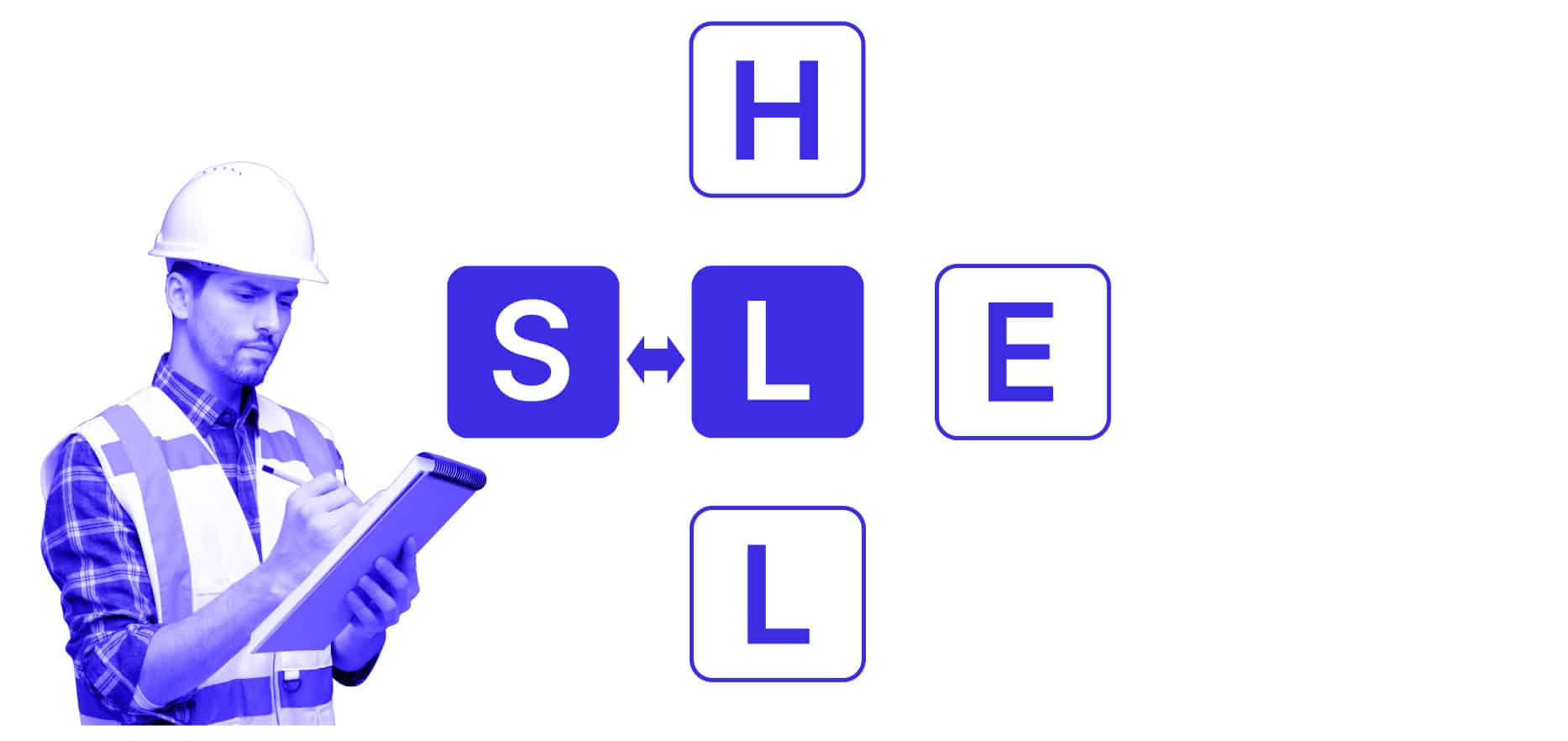
To ensure a safe and effective interaction between humans and software, the software must be implemented efficiently. The implementation must be straightforward, understandable, and user-friendly.
For instance, using standardised symbols and colours for lights and warnings is crucial. Red is typically used for emergencies, while green shows it’s safe to go. The challenges that arise from the L-S interface are typically less tangible, making them more challenging to identify and solve.
The potential mismatches at the L-S interface can be due to various factors, including insufficient or inappropriate procedures, misinterpretation of confusing or ambiguous symbols or checklists, misleading or cluttered maps, or charts, and irrational indexing of an operations manual.
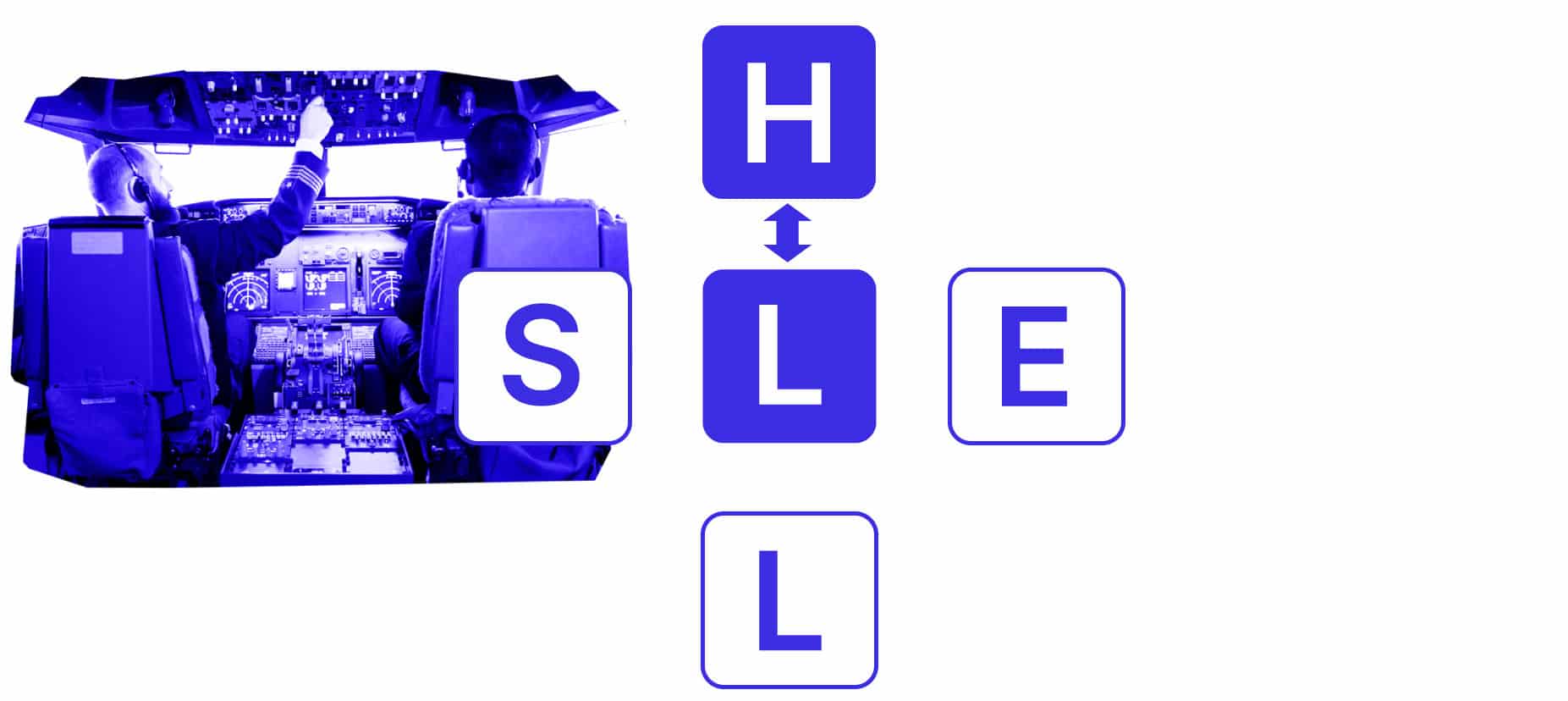
This interface in the SHELL model involves matching the physical features of aircraft, cockpit, or equipment with the characteristics of the human users. It should also consider the task or job to be performed. For instance:
As computers and advanced automated systems become more widespread, the “man/machine” issue has become one of the most important aspects of Human Factors. Mismatches at the Liveware-Hardware interface can happen due to poorly designed equipment, missing operational material, badly located or coded instruments, warning systems that fail to alert or provide information or guidance in abnormal situations, etc.
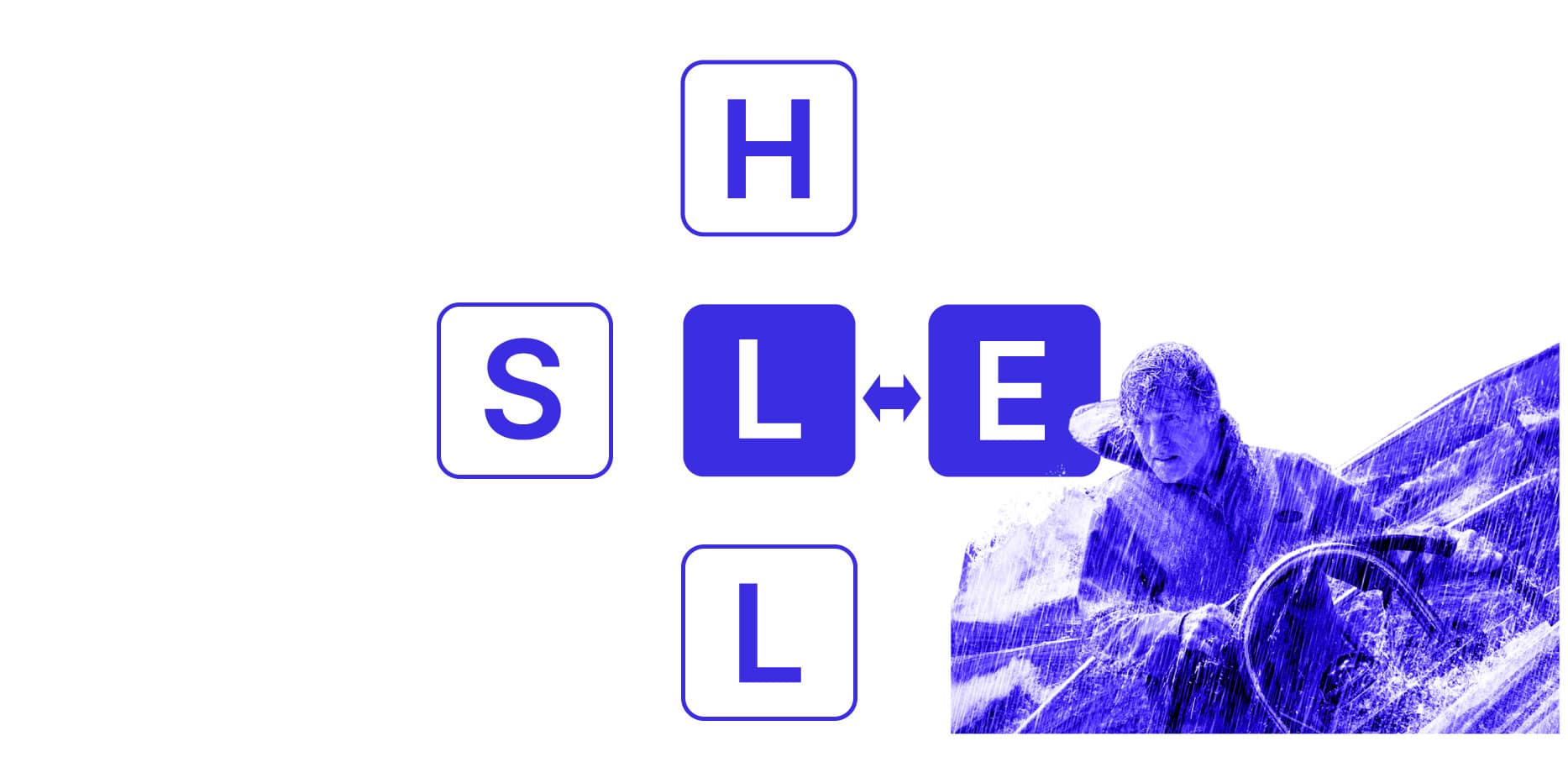
This interface may be outside humans’ control. The interface between humans and their environment can refer to external factors such as temperature, weather and terrain. It can also refer to internal factors within the aircraft such as vibration, light, air quality and noise.
In the past, efforts focused on adapting humans to the environment by using helmets, flying suits, oxygen masks, and G-suits. However, in recent times, the trend has shifted to adjusting the environment to suit human needs. This includes pressurisation, air conditioning, soundproofing, and black-out curtains to aid sleep during daylight.
To ensure the safety of both humans and machinery, developing protective systems against radiation, noise and lighting has been a focus in aviation. The proper matching of the liveware-environment interactions requires input from various disciplines, such as environmental studies, physiology, psychology, physics and engineers.
Because travelling long distances no longer takes several days, it disturbs humans’ body rhythm and sleep patterns to a greater extent than before. Similarly, aircraft fly at much higher altitudes than before; they expose humans to much greater levels of ozone and radiation.
Other examples of mismatches include pilot perceptual errors induced by environmental conditions, such as visual illusions during approach or landing at nighttime. An inadequate or unhealthy organisational environment can reflect a flawed operating philosophy, poor employee morale, or a negative corporate culture.
The SHELL Model does not consider interfaces outside human factors’ scope. The model does not consider the hardware-hardware, hardware-environment, and hardware-software interfaces since these interfaces do not involve the liveware component.
Any change within the aviation SHELL system can have far-reaching repercussions. For example, a minor equipment change (hardware) requires an evaluation of its impact on the maintenance personnel (Liveware-Hardware). Evaluators must then determine if changes in training or procedures are necessary. Failure to address all possible effects of a modification in the aviation system can lead to undesirable consequences, regardless of how minor the modification is.
The SHELL model helps optimise the relationship between people and their activities within the aviation system. Investigators can use this model to collect data about human performance and component mismatches during aviation incident/accident analysis.
Finally, we can use the SHELL model to understand the relationships between systemic human factors during operational audits, which can help reduce errors, enhance safety, and improve processes.
Dive into our insightful and informative articles that will help you explore more and get ahead of the competition.
© 2024 NaviMinds – Designed by Aveo web&marketing